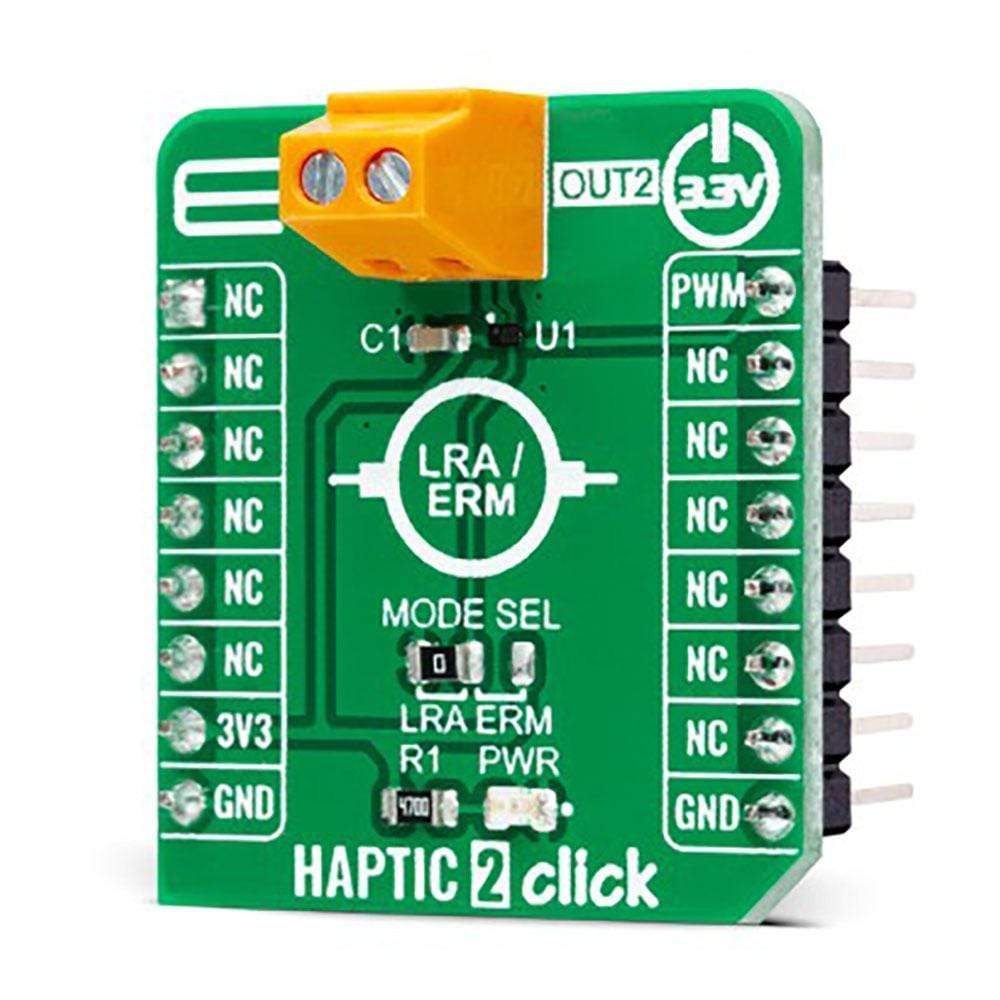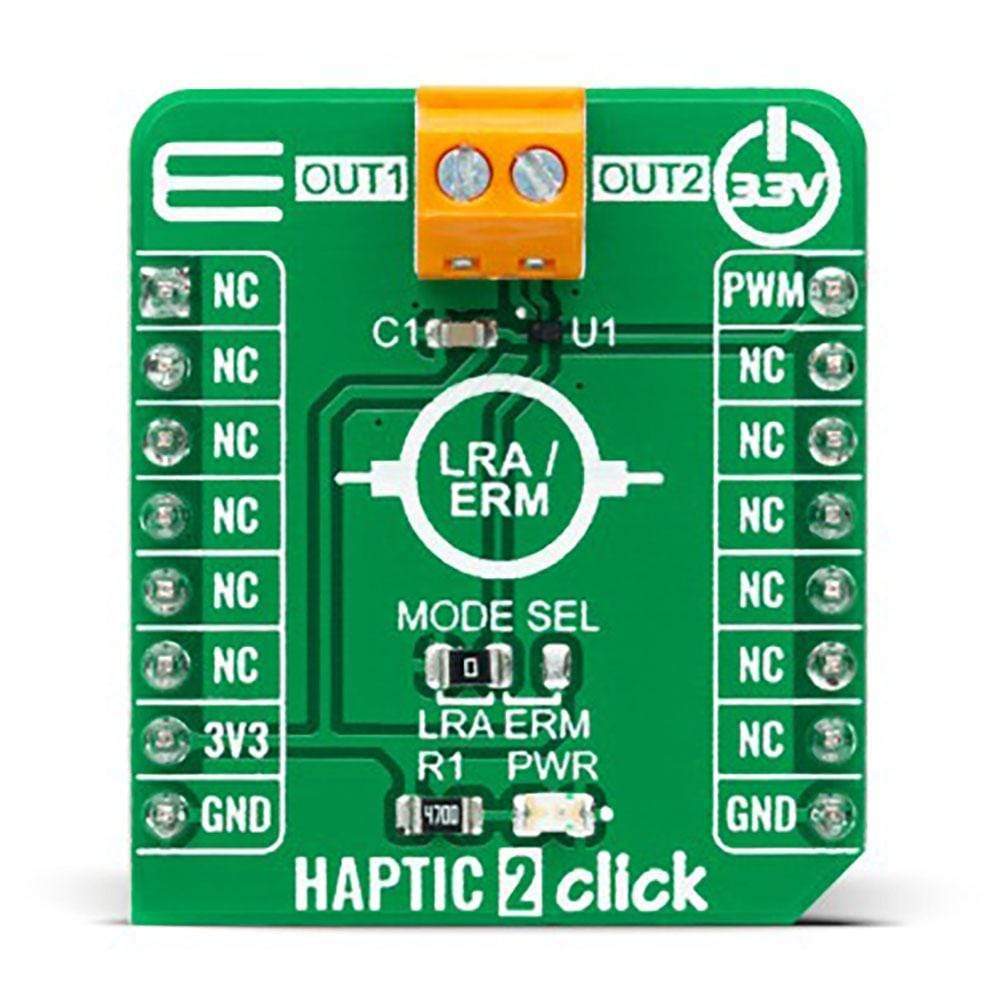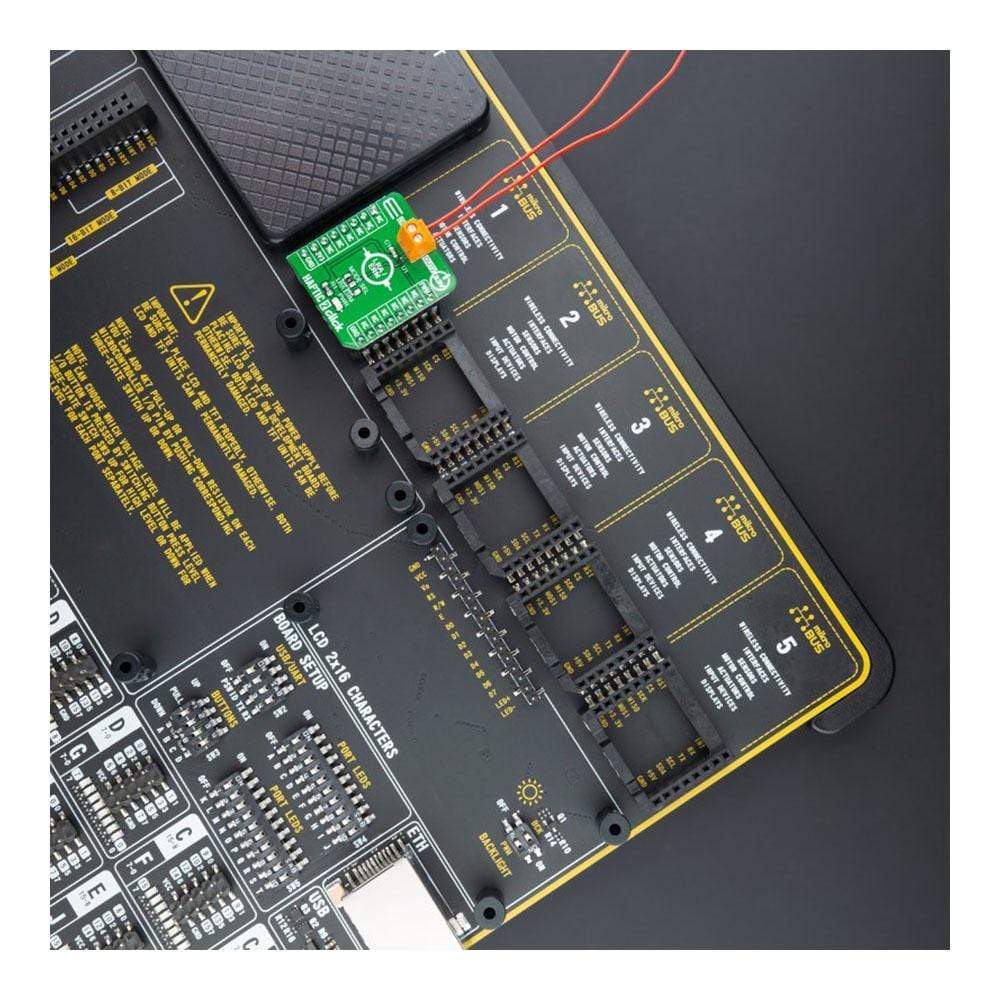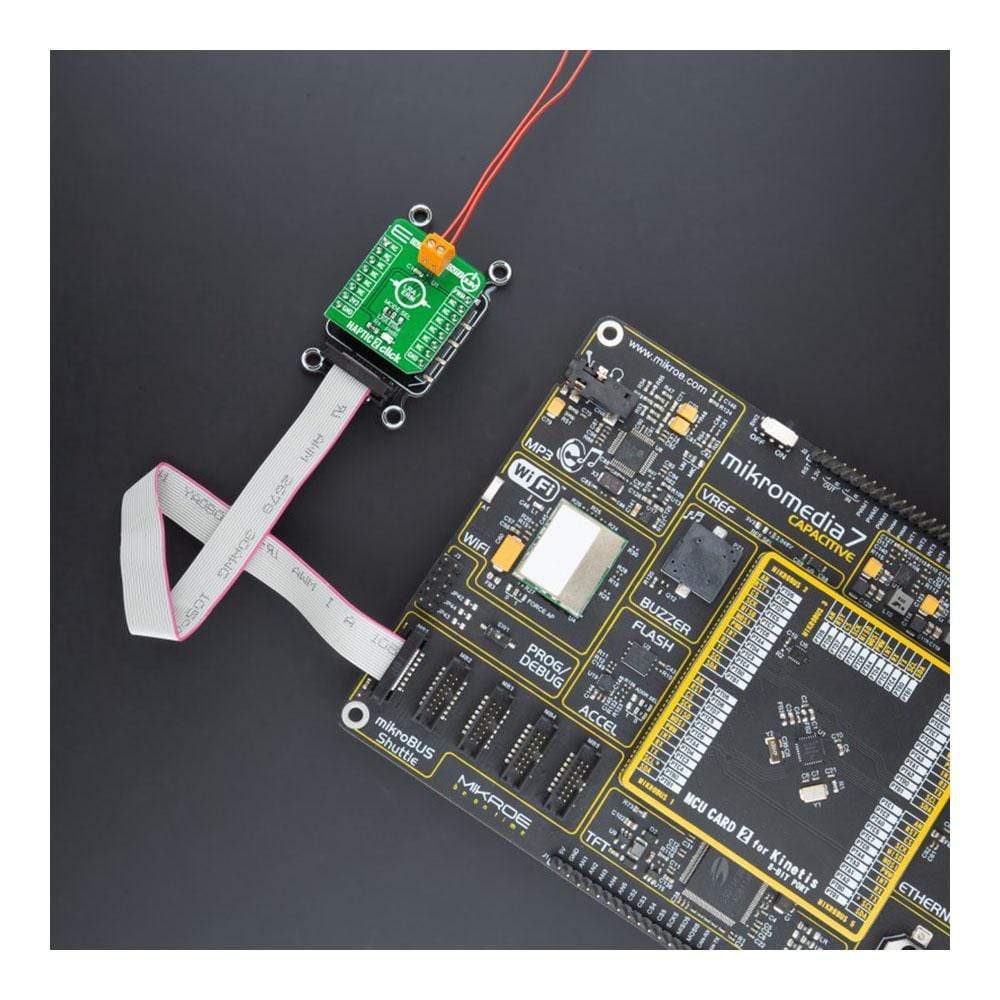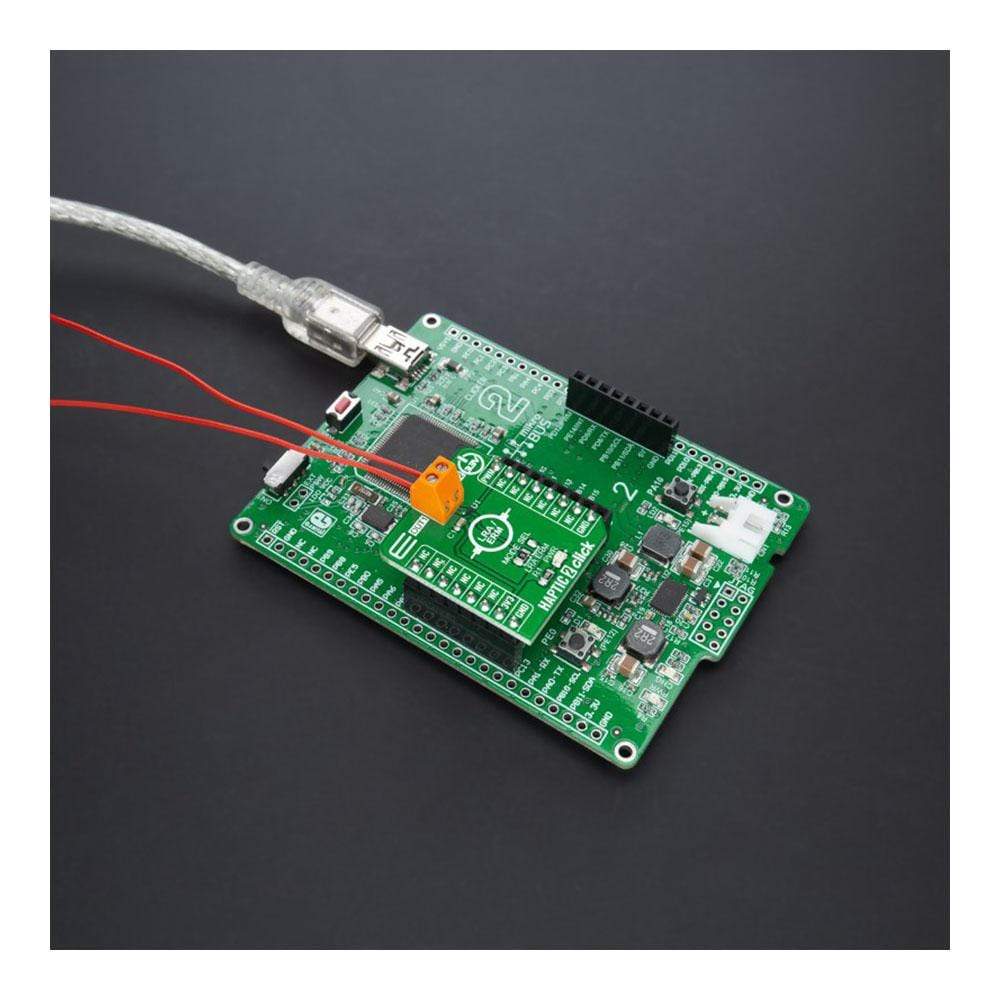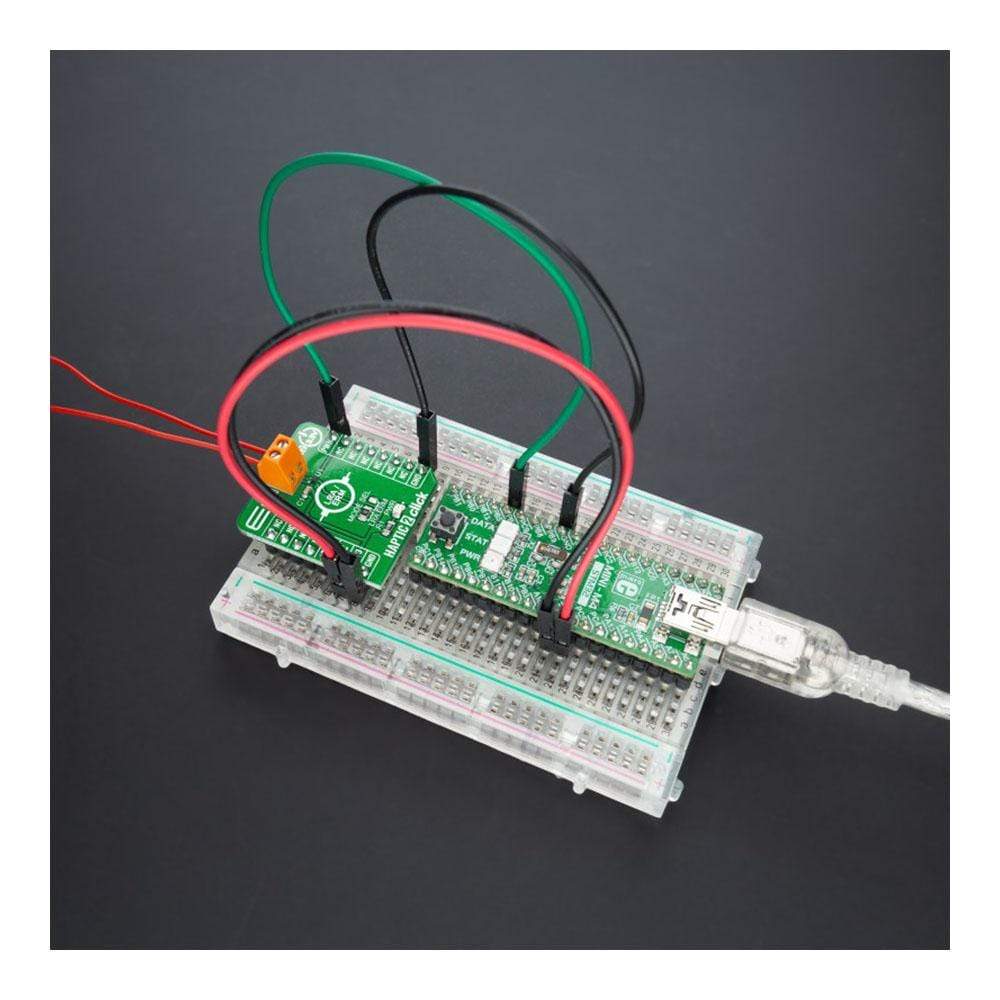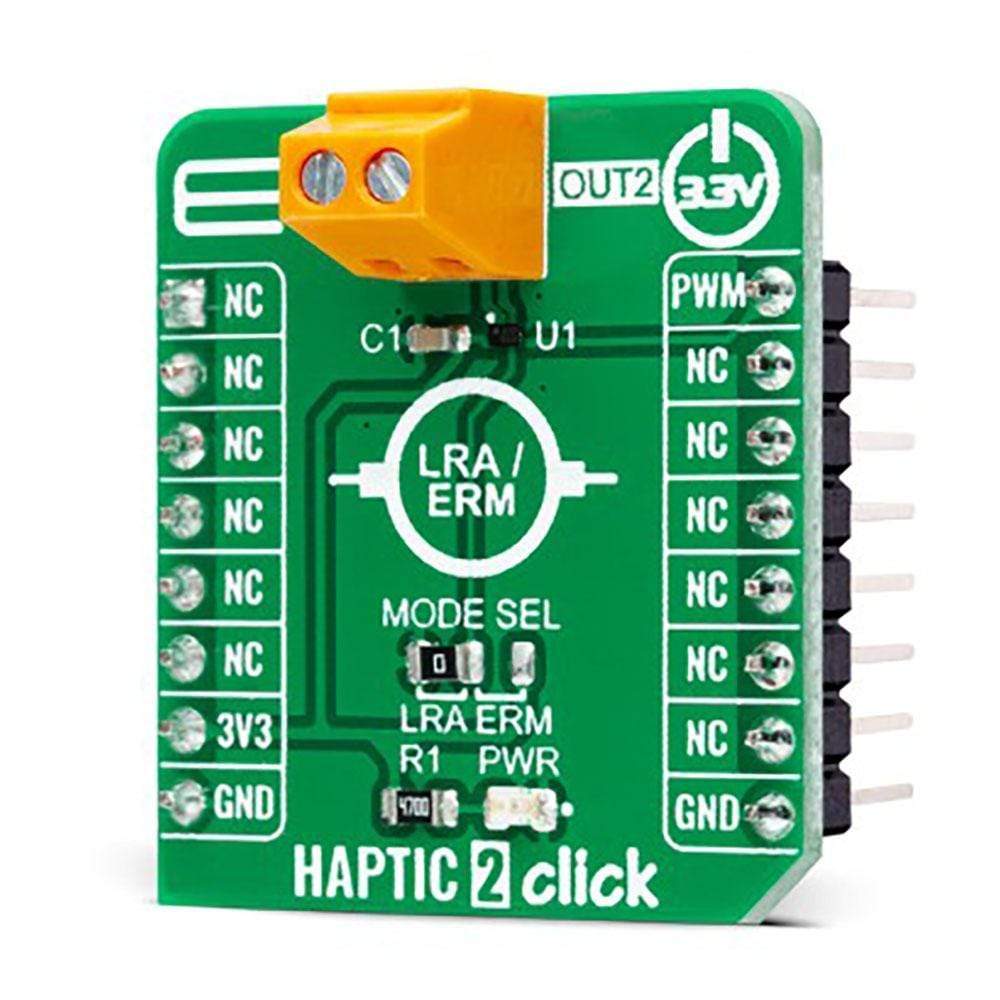
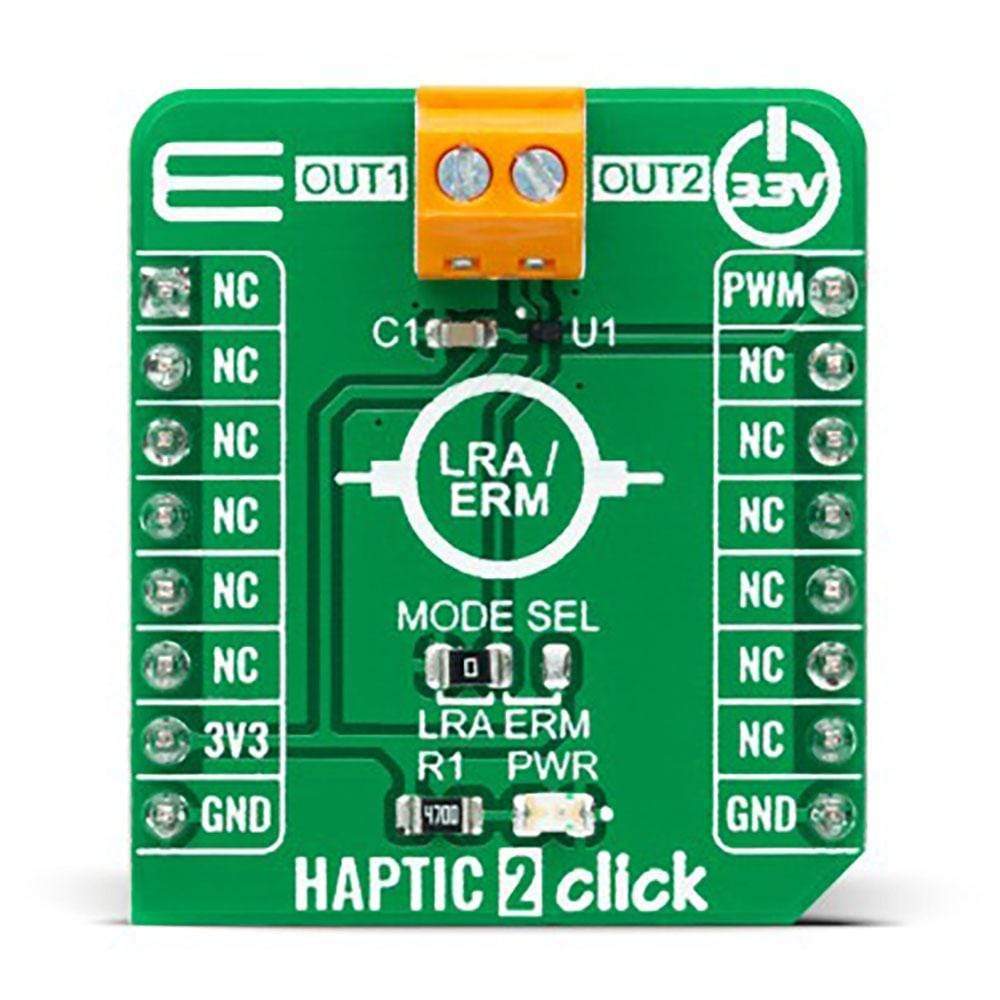
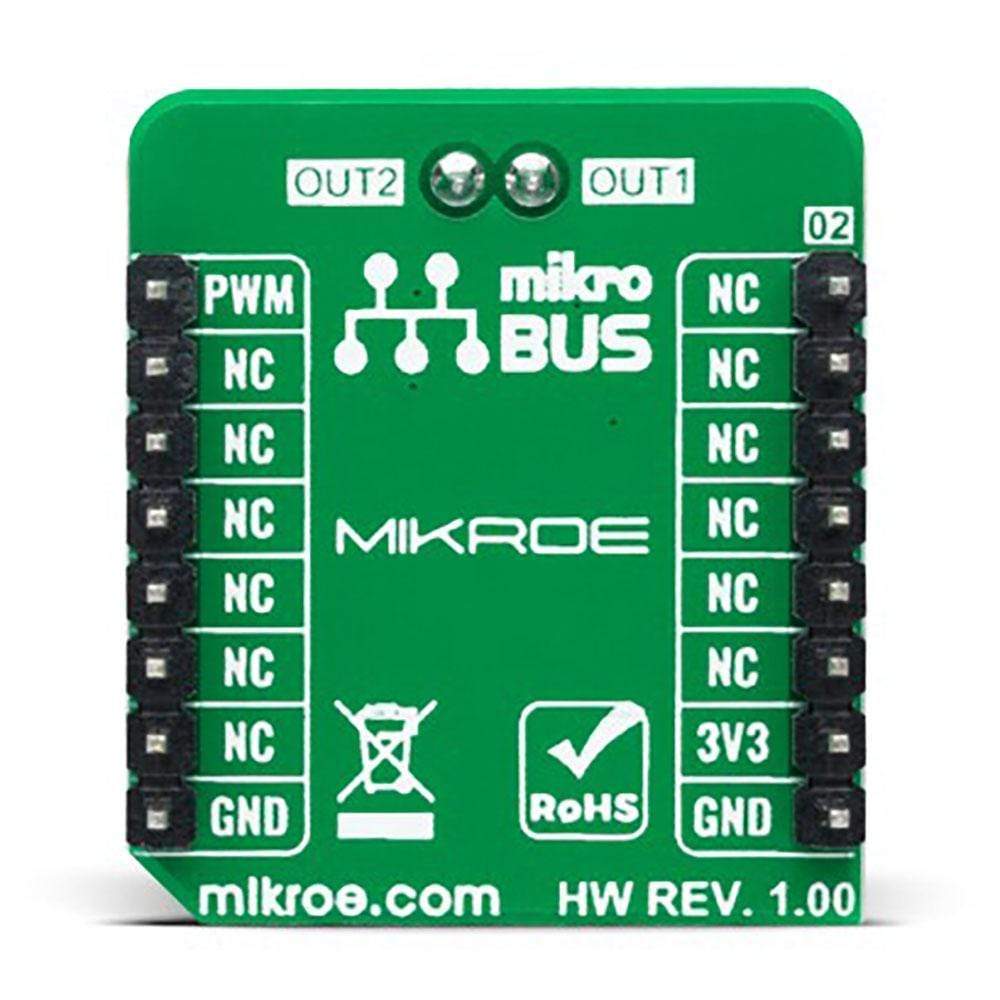
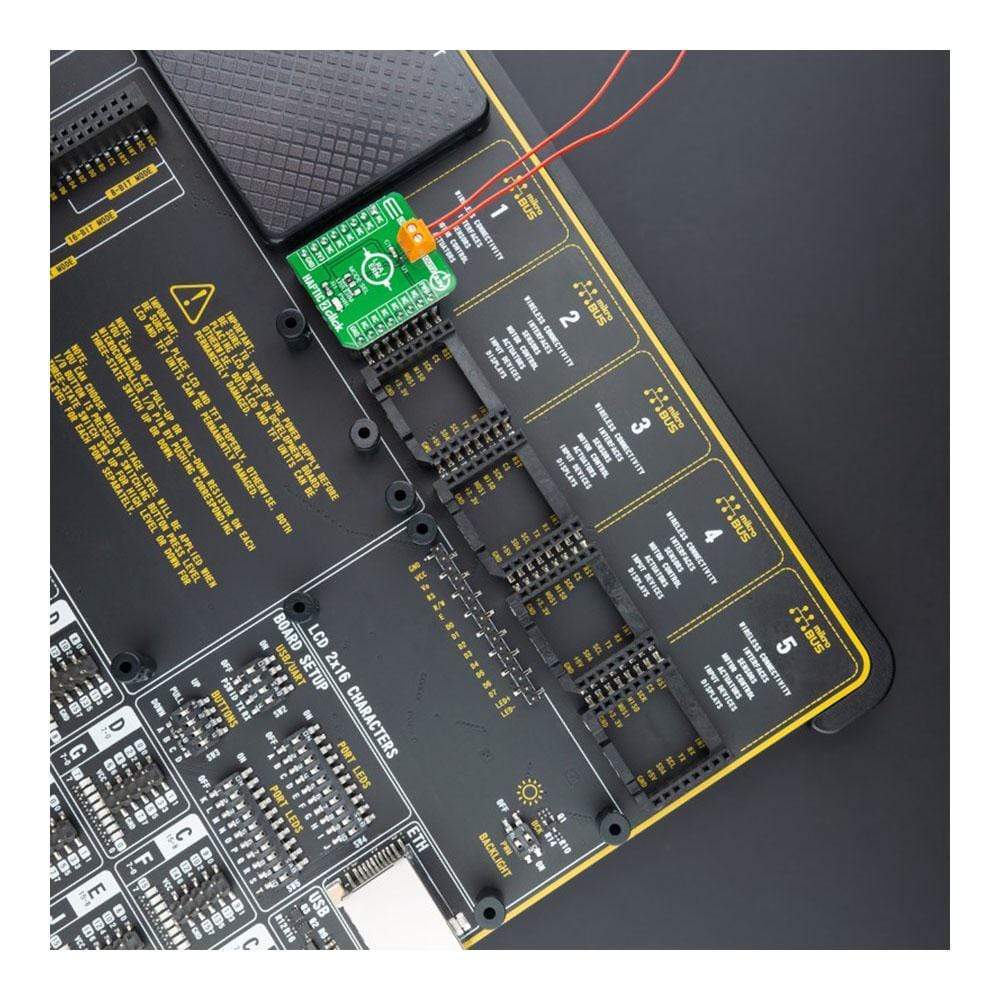
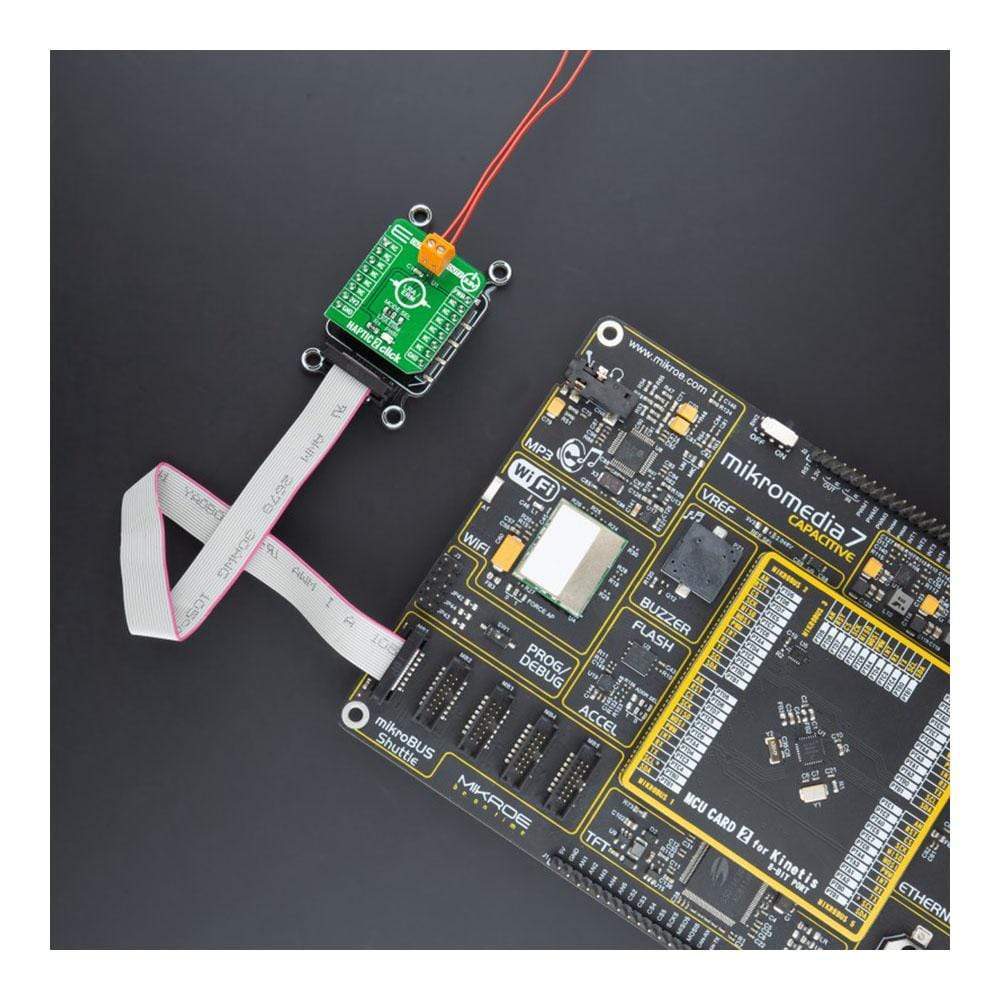
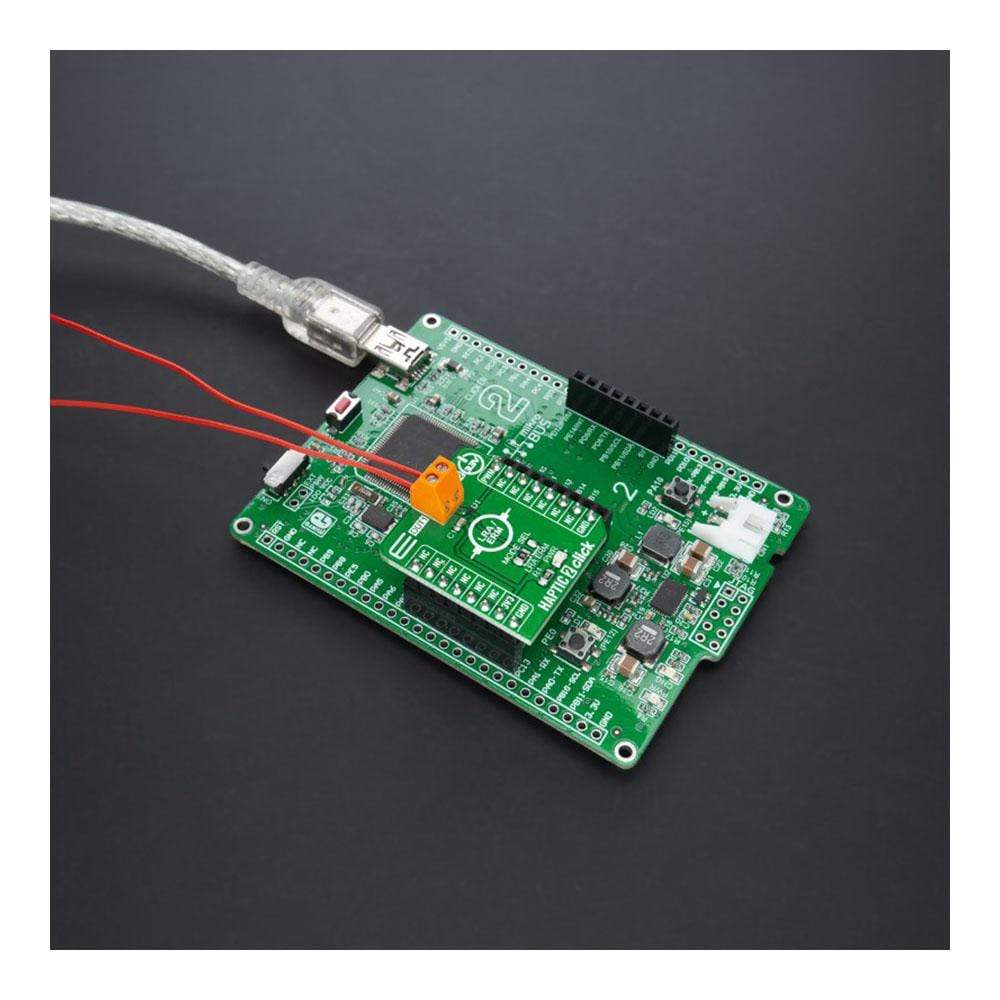
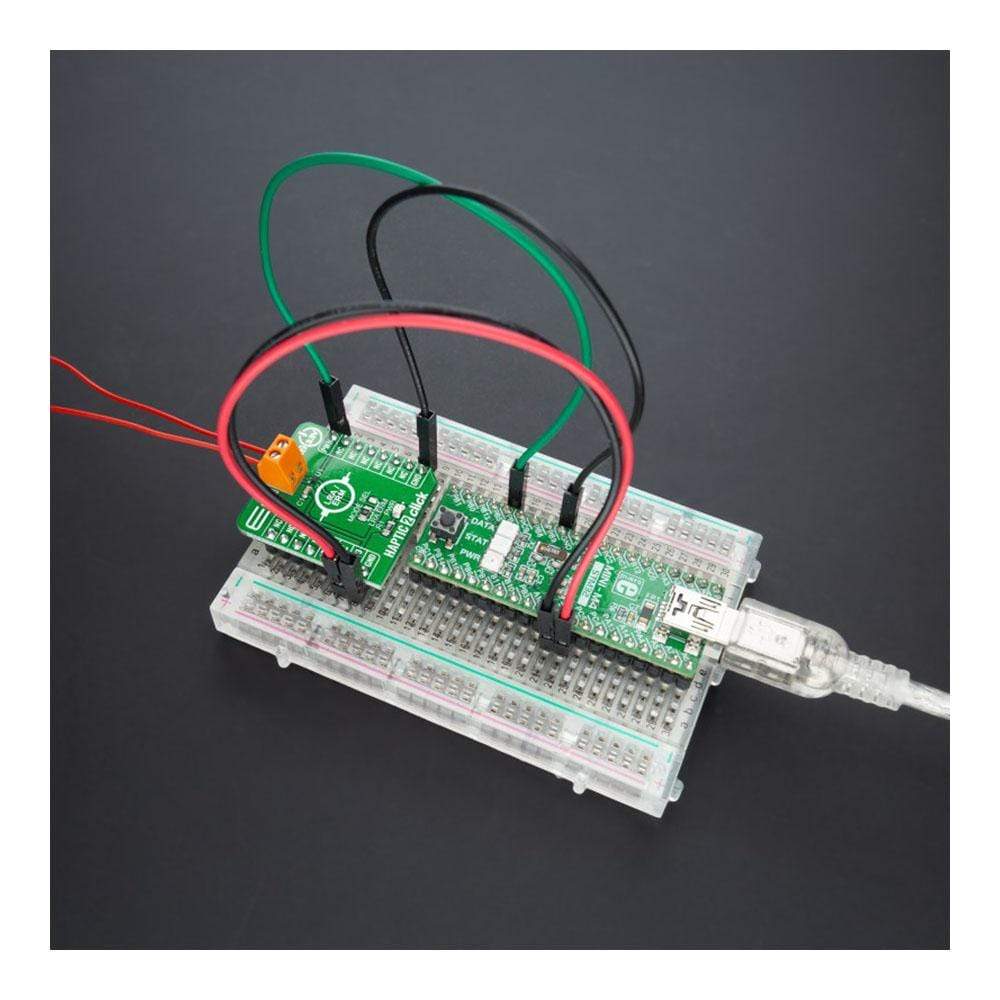
Overview
The Haptic 2 Click Board™ is a compact add-on board with a linear vibration driver. This board features the LC898302AXA, a motor driver dedicated to LRA and ERM applications from ON Semiconductor. Controlled by only one pin, it allows crisp vibration thanks to automatic braking and over-driving feature and ignores the deviation of resonance frequency thanks to auto-tuning function. The original driving waveform will enable you to reduce power consumption, and it is helpful to maintain battery lifetime. This Click Board™ is suitable for numerous everyday applications such as indicator systems, game consoles, training equipment/simulators with haptics function, robotics and mechatronics, and many more.
The Haptic 2 Click Board™ is supported by a mikroSDK compliant library, which includes functions that simplify software development. This Click Board™ comes as a thoroughly tested product, ready to be used on a system equipped with the mikroBUS™ socket.
Downloads
How Does The Haptic 2 Click Board™Work?
The Haptic 2 Click Board™ as its foundation uses the LC898302AXA, a linear vibration motor driver dedicated to LRA (Linear Resonant Actuator) and ERM (Eccentric Rotating Mass) applications from ON Semiconductor. The original driving waveform enables low power consumption, and it is helpful to maintain battery lifetime. It allows crisp vibration thanks to automatic braking and over-driving feature. The drive frequency automatically adjusts to the resonance frequency of the linear vibrator without the use of other external parts.
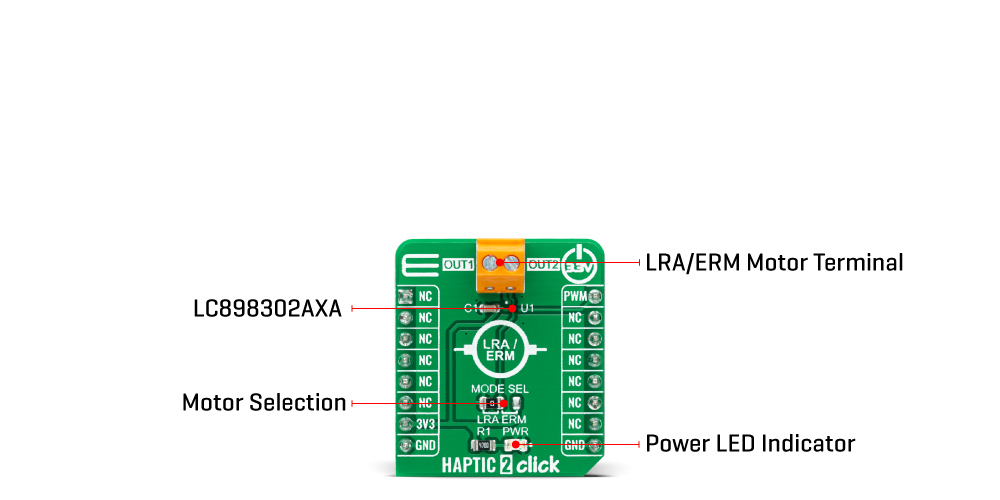
As a result of this very effective drive, the vibration is as powerful as possible using minimal energy compared to classical solutions. It also ignores the deviation of resonance frequency thanks to auto-tuning function. This function can increase the perceived vibration force by over 20%, making it far more efficient than conventional haptic driving solutions. They require minimal power but can maintain a high level of vibration.
The LRA motors rely on a magnet attached to the case by a spring where a magnetic field from the coil causes vibration activity initiation. Compared to ERM, the LRA have better responsiveness improving system performance. The ERM type of haptic motor causes the off-balance mass to rotate. The mass movement results in an asymmetric centripetal force, leading to the motor's displacement. Using ERM motor, ERM driving voltage can be adjusted through an adjustment resistor connected between OUT1 pin of Click board terminal and ERM motor pin.
The Haptic 2 Click Board™ operates only with the PWM signal from the mikroBUS™ socket that drives the LC898302AXA and offers fully configurable drive and brake functions. Also, it has a jumper setting labelled as MODE SEL used to choose between LRA or ERM motor to drive.
The Haptic 2 Click Board™ can operate only with a 3.3V logic voltage. The board must perform appropriate logic voltage level conversion before use with MCUs with different logic levels. However, the Click board™ comes equipped with a library containing functions and an example code that can be used, as a reference, for further development.
SPECIFICATIONS
| Type | Haptic |
| Applications | Can be used for numerous everyday applications such as indicator systems, game consoles, training equipment/simulators with haptics function, robotics and mechatronics, and many more. |
| On-board modules | LC898302AXA - linear vibration motor driver dedicated to LRA (Linear Resonant Actuator) and ERM (Eccentric Rotating Mass) applications from ON Semiconductor |
| Key Features | Low power consumption, automatic adjustment to the resonance frequency for LRA, adjustable drive and brake voltage, low driving noise, available to drive a LRA and ERM, and more. |
| Interface | PWM |
| Compatibility | mikroBUS |
| Click board size | S (28.6 x 25.4 mm) |
| Input Voltage | 3.3V |
PINOUT DIAGRAM
This table shows how the pinout of the Haptic 2 Click Board™ corresponds to the pinout on the mikroBUS™ socket (the latter shown in the two middle columns).
| Notes | Pin |  |
Pin | Notes | |||
|---|---|---|---|---|---|---|---|
| NC | 1 | AN | PWM | 16 | PWM | PWM Signal | |
| NC | 2 | RST | INT | 15 | NC | ||
| NC | 3 | CS | RX | 14 | NC | ||
| NC | 4 | SCK | TX | 13 | NC | ||
| NC | 5 | MISO | SCL | 12 | NC | ||
| NC | 6 | MOSI | SDA | 11 | NC | ||
| Power Supply | 3.3V | 7 | 3.3V | 5V | 10 | NC | |
| Ground | GND | 8 | GND | GND | 9 | GND | Ground |
ONBOARD SETTINGS AND INDICATORS
| Label | Name | Default | Description |
|---|---|---|---|
| LD1 | PWR | - | Power LED Indicator |
| JP1 | MODE SEL | Left | Motor Selection LRA/ERM: Left position LRA, Right position ERM |
HAPTIC 2 CLICK ELECTRICAL SPECIFICATIONS
| Description | Min | Typ | Max | Unit |
|---|---|---|---|---|
| Supply Voltage | - | 3.3 | - | V |
| Maximum Drive Current | - | - | 200 | mA |
| PWM Frequency | 10 | - | 50 | kHz |
| Operating Temperature Range | -30 | +25 | +85 | °C |
| General Information | |
|---|---|
Part Number (SKU) |
MIKROE-4452
|
Manufacturer |
|
| Physical and Mechanical | |
Weight |
0.017 kg
|
| Other | |
Country of Origin |
|
HS Code Customs Tariff code
|
|
EAN |
8606027382062
|
Warranty |
|
Frequently Asked Questions
Have a Question?
Be the first to ask a question about this.

